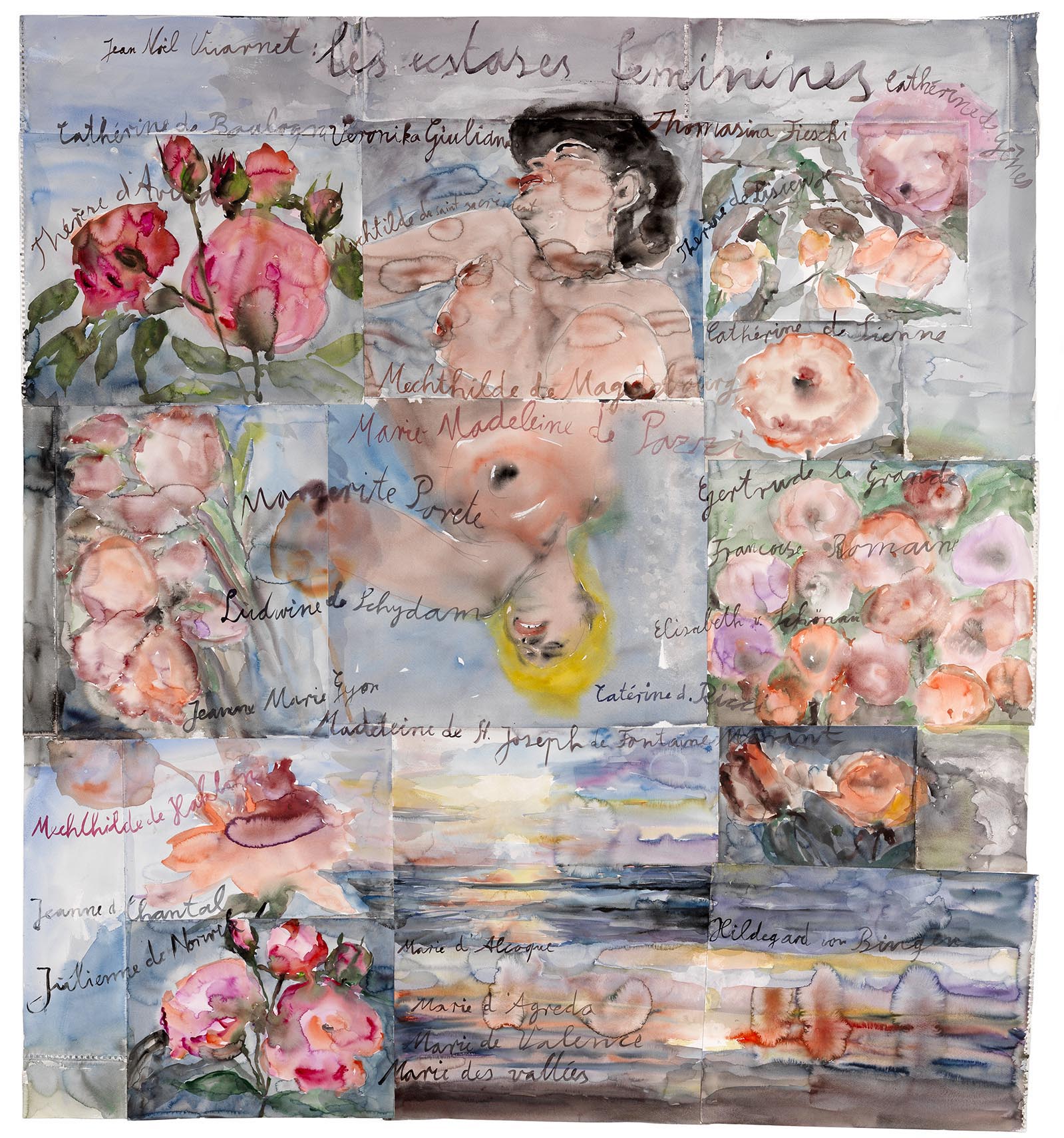
In an expansive new show, German art star Anselm Kiefer offers a brighter vision than the one he is best known for: dark impasto paintings often dealing with morose themes such as the Holocaust and Germany’s troubled history. While the dramatic tone remains in “Transition from Cool to Warm,” at Gagosian Gallery in New York, it does bring together works that have a sunnier palate. His gorgeous, colorful watercolors make up a greater portion of this show than they have in any previous gallery showing by the artist.
In a letter printed in the catalogue, Kiefer confesses reservations about the new direction: “Never had I such doubts. What is with these colors everywhere? Have I succumbed to temptation? Have I become an affirmative painter?”
In terms of subject matter, women come in for a new, more affirmative treatment. Early in his career, Kiefer painted barren landscapes haunted by specters of women, their faces looming over the scenes. In the last few years, those women have reappeared in numerous watercolors, now recumbent, nude, and plainly in erotic ecstasy, recalling the imagery of Bernini’s Ecstasy of Saint Teresa (1652).
Biblical, mythical, and literary figures, as ever, provide abundant inspiration. Several watercolors showing morning skies and flying planes are inscribed with the name of Aurora, the Roman goddess of the dawn. Kiefer has frequently sculpted lead versions of fighter planes, decaying reminders of World War II. But here, his watercolors depict passenger planes soaring past the morning sun.
Handmade books—which constitute more than half the artist’s output—appear in abundance as well. One whole room is devoted to numerous glass cases in which his large volumes are displayed, appearing under a wall text that reads “Klinsgsors Garten (Klingsor’s Garden).” Here, the reference is to a magician in Wagner’s opera Parsifal, who creates a garden of maidens to seduce Knights of the Grail. The books feature drawings and paintings of female figures, nude and often splayed in openly sexual poses that are made sinister by their deadly mission.
The watercolors and artists’ books are also complemented by a suite of imposing and dark acrylic landscape paintings, reminiscent of Kiefer’s more iconic works. One example, For Segantini: die bösen Mütter (For Segantini: The Bad Mothers), from 2011–12, invokes Giovanni Segantini, a 19th-century Italian painter well known in his day, but now relegated to obscurity. Inspired by Segantini’s images of neglectful mothers being merged with bare trees in winter landscapes, Kiefer’s tableau shows an open book and a tree branch—the latter obliquely standing in for Segantini’s female figures— affixed to a large canvas depicting a snowy terrain.
Such meetings of dark and light were, in fact, Kiefer’s goal, as he says in the same letter. “This, then, is the task: to capture the ecstasy of blazing color, the moment of greatest exaltation in color in such a way that it coincides with the severe winter cold.”
See more images of the exhibition below:
Anselm Kiefer, aller Tage Abend, aller Abende Tag (The Evening of All Days, the Day of All Evenings) (2013). © Anselm Kiefer. Photo © Georges Poncet.
Courtesy Gagosian, New York.
Anselm Kiefer, Les extases féminines (The Feminine Ecstasies) (2013). © Anselm Kiefer. Photo © Georges Poncet.
Courtesy Gagosian, New York.
Anselm Kiefer, aller Tage Abend, aller Abende Tag (The Evening of All Days, the Day of All Evenings (2014). © Anselm Kiefer. Photo © Georges Poncet.
Courtesy Gagosian, New York.
Anselm Kiefer, aller Tage Abend, aller Abende Tag (2014). “© Anselm Kiefer. Photo © Charles Duprat. Courtesy Gagosian, New York.
Anselm Kiefer, For Segantini: die bösen Mütter (For Segantini: The Bad Mothers) (2011–12). © Anselm Kiefer. Photo © Georges Poncet. Courtesy Gagosian, New York.
Installation view, Anselm Kiefer, “Transition from Cool to Warm.” © Anselm Kiefer. Photo by Rob McKeever. Courtesy Gagosian, New York.
Installation view, Anselm Kiefer, “Transition from Cool to Warm.” © Anselm Kiefer. Photo by Rob McKeever. Courtesy Gagosian, New York.
Installation view, Anselm Kiefer, “Transition from Cool to Warm.” © Anselm Kiefer. Photo by Rob McKeever. Courtesy Gagosian, New York.
“Transition from Cool to Warm” is at Gagosian Gallery, 522 West 21st Street, New York, through September 1, 2017.